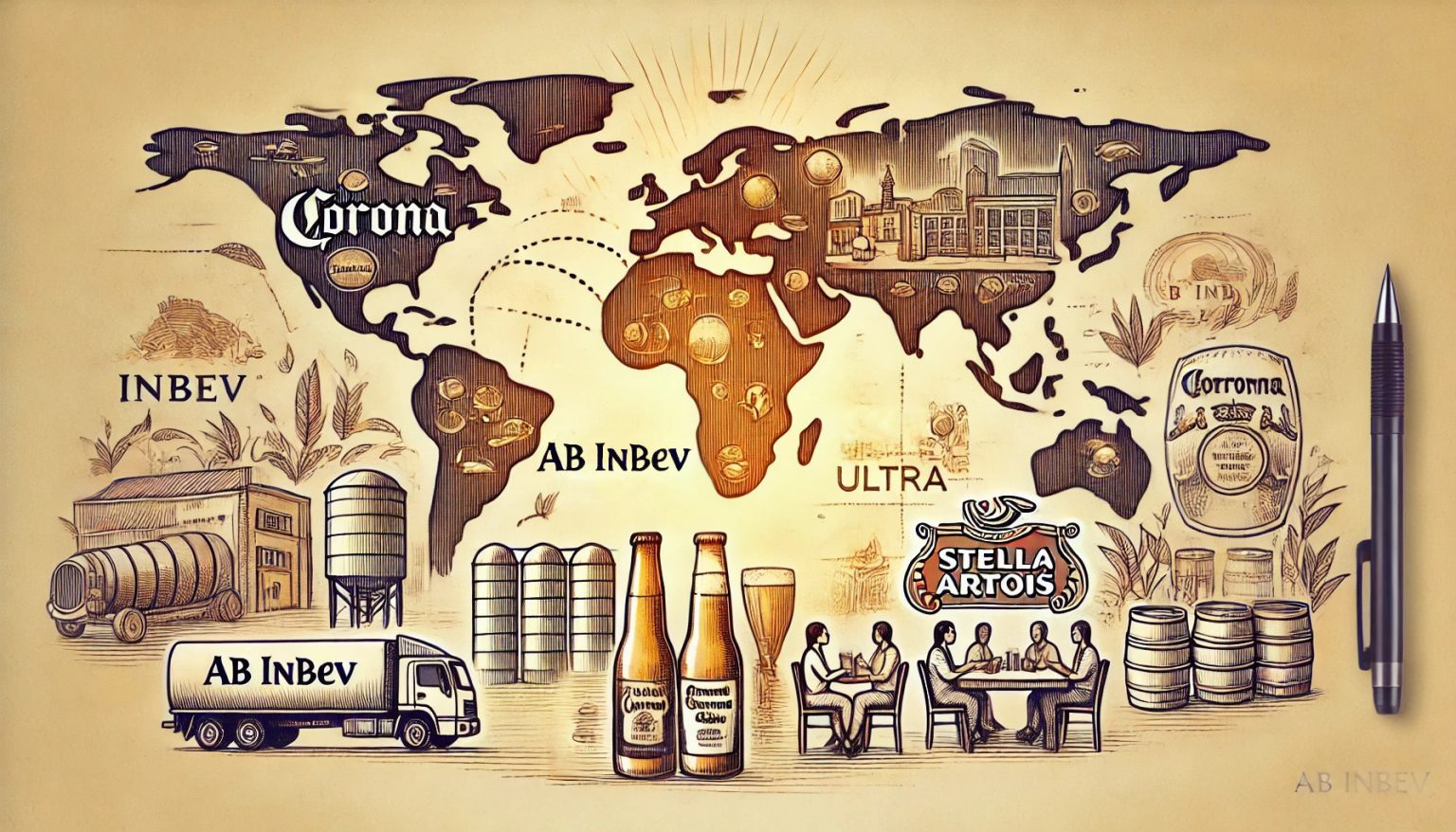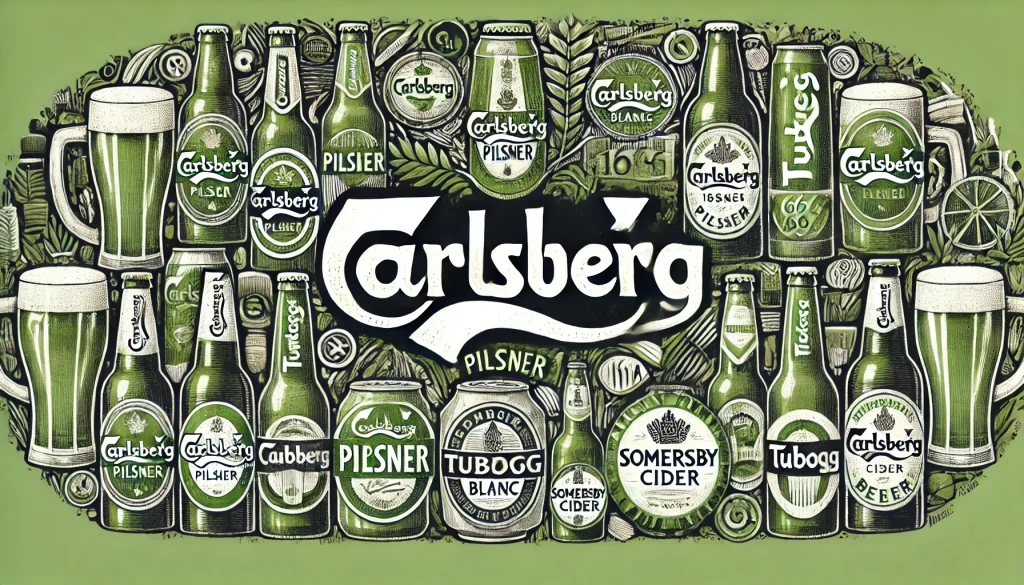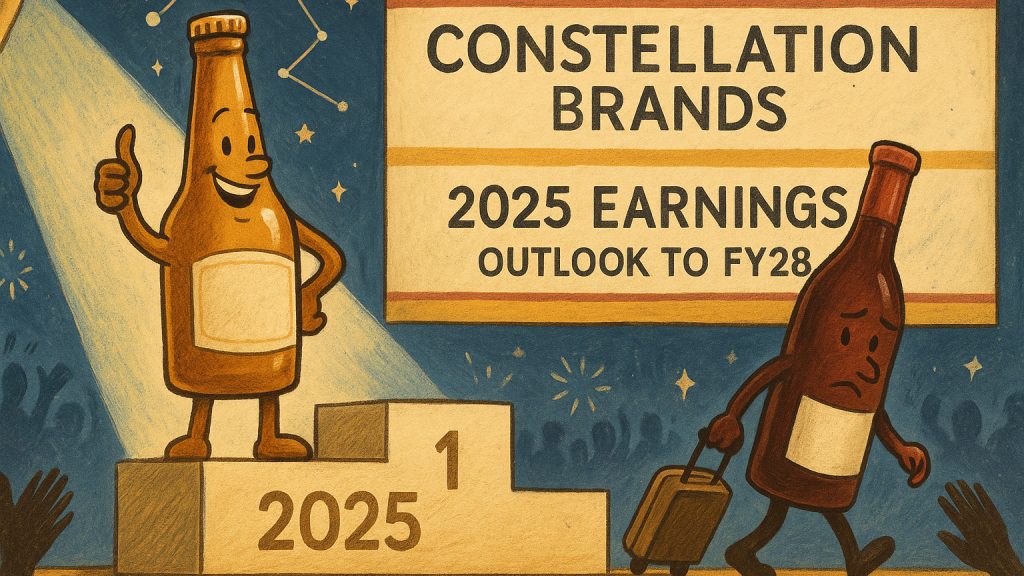In 2024, Anheuser-Busch InBev (AB InBev) solidified its position as the world’s leading brewer, delivering a robust financial performance amid a complex global landscape. With revenue climbing to $59,768 million, normalized EBITDA rising 8.2% to $20,958 million, and Underlying EPS surging 15.4% to $3.53, the company achieved record highs despite a 1.4% drop in total volumes to 575,706 thousand hectoliters. This resilience underscores AB InBev’s ability to navigate economic headwinds, regional disparities, and shifting consumer preferences through a potent mix of premiumization, digital innovation, and operational discipline. Yet, challenges loom large—most notably in China and Argentina—raising critical questions: How does AB InBev sustain growth in softening markets? What role will no-alcohol beer, Beyond Beer, and platforms like BEES play in its future? This unfiltered deep dive explores the company’s financials, regional dynamics, market opportunities, and strategic execution, culminating in a raw look at its next steps.
2. Financial Performance: A Robust Foundation
AB InBev’s 2024 financial results reflect a company firing on multiple cylinders, achieving top-line growth, margin expansion, and a significant deleveraging milestone. These figures, drawn from the February 26, 2025, press release, paint a picture of resilience and strategic focus.
2.1 Revenue and Profitability: Record Highs Amid Challenges
Total revenue reached $59,768 million in FY24, a 2.7% organic increase from $59,380 million in FY23, driven by a 4.3% rise in revenue per hectoliter. This growth, achieved in 75% of AB InBev’s markets, reflects disciplined revenue management and a relentless push toward premiumization—strategies emphasized by CEO Michel Doukeris as central to the company’s “consistent execution.” Reported revenue, however, grew just 0.7% due to unfavorable currency translation, highlighting the impact of a strong U.S. dollar on its global footprint. Normalized EBITDA climbed 8.2% to $20,958 million from $19,976 million, hitting the top end of the company’s 4-8% medium-term outlook. This was accompanied by a 179-basis-point margin expansion to 35.1%, fueled by production cost efficiencies and overhead discipline. Underlying profit rose to $7,061 million from $6,158 million, boosting Underlying EPS from $3.05 to $3.53—a 15.4% leap. These gains underscore AB InBev’s ability to extract value per unit sold, even as volumes faltered.
2.2 Volume Dynamics: A Mixed Picture
Total volumes declined 1.4% to 575,706 thousand hectoliters from 584,728 thousand hectoliters in FY23, with own beer volumes dropping 2.0% to 495,496 thousand hectoliters from 505,899 thousand hectoliters. Non-beer volumes, however, grew 1.5% to 75,932 thousand hectoliters, signaling modest diversification. In Q4, the decline steepened to 1.9% (141,829 thousand hectoliters vs. 144,706 thousand hectoliters in Q4’23), with own beer down 2.1%. The softness was largely attributable to China and Argentina, where macroeconomic pressures curbed demand. Excluding these markets, global volumes rose 0.9%, revealing underlying strength in AB InBev’s diversified portfolio. This dichotomy—volume declines offset by revenue and profit gains—highlights the efficacy of its premiumization strategy but also flags regional vulnerabilities that demand attention.
2.3 Capital Efficiency and Shareholder Value
Free cash flow soared to $11,300 million, a $2,500 million increase from FY23, driven by EBITDA growth, optimized net working capital, and reduced net capital expenditure (down from $4,500 million to $3,700 million). Net debt fell $6,900 million to $60,600 million from $67,600 million, lowering the net debt to normalized EBITDA ratio to 2.89x from 3.38x—the first time below 3.0x since 2015. This deleveraging, achieved via $9,000 million in bond repurchases and $5,000 million in issuances, strengthens AB InBev’s balance sheet for future investments. Shareholders reaped rewards too: the Board proposed a 22% dividend hike to €1.00 per share (pending April 30, 2025, AGM approval), and $750 million of a $2,000 million share buyback program was completed by February 21, 2025. These moves signal confidence in sustained cash generation and a commitment to balancing growth with returns.
3. Global Market Performance: Regional Resilience and Variability
AB InBev’s 2024 performance varied sharply by region, reflecting its global scale and adaptability. The following breakdowns, sourced from the press release’s regional data, illustrate both triumphs and trials.
3.1 North America: Momentum in the U.S.
In the U.S., FY24 revenue dipped 2.0% to $16,165 million, with volumes (sales-to-wholesalers) down 3.9% to 86,272 thousand hectoliters, though supported by two extra selling days. Revenue per hectoliter rose 1.9%, and EBITDA grew 2.2% with a 140-basis-point margin expansion. Q4 showed improvement: revenue up 0.8%, sales-to-retailers up 0.5% (outpacing the industry), though STWs fell 1.7%. Michelob Ultra led as the #1 volume share gainer in 2H24, while Busch Light ranked #2 in Q4, helping AB InBev gain beer market share. The no-alcohol segment shone with Michelob Ultra Zero’s January 2025 launch, tapping strong demand. Beyond Beer—accounting for 45% of revenue alongside above-core beer—grew mid-teens, led by Cutwater and Nütrl in the booming spirits-based RTD category (100% of U.S. spirits value growth per Circana). This resilience, amid a 5.0% FY STR decline, reflects strategic reinvestment of efficiencies into marketing.
3.2 Middle Americas: Mexico’s Record Highs
Mexico delivered standout results: FY24 revenue grew mid-single digits, volumes rose low-single digits to 150,086 thousand hectoliters (up 0.9%), and EBITDA increased high-single digits with margin expansion. Q4 saw high-single-digit revenue growth and low-single-digit volume gains, aligning with an improving industry. Record volumes and market share gains were driven by Corona’s mid-single-digit growth and above-core brands’ low-single-digit rise. Corona Cero’s strong double-digit volume growth reinforced AB InBev’s no-alcohol leadership. Digitally, BEES Marketplace GMV grew 24%, and TaDa Delivery orders rose 21%, cementing Mexico as a growth engine.
3.3 South America: Brazil’s Outperformance
Brazil shone with FY24 revenue up 4.7%, total volumes up 1.5% to 160,768 thousand hectoliters (beer up 0.6%), and EBITDA up 14.5% with 284 bps of margin expansion. Revenue per hectoliter rose 3.1%, reflecting premiumization (Budweiser up nearly 50%, Corona strong). Q4 was softer—revenue up 0.9%, volumes down 2.8% (beer down 3.9%) due to adverse weather—but still outperformed the industry. No-alcohol volumes grew double-digits, led by Budweiser Zero and Corona Cero, while non-beer (e.g., low/no-sugar) surged low-twenties. BEES Marketplace GMV rose 47%, and Zé Delivery orders hit 66 million (up 10%). Argentina, however, faltered: volumes fell high-teens amid inflation, though revenue grew mid-single digits under a capped 2% monthly price growth metric.
3.4 EMEA: Europe’s Recovery
Europe posted FY24 revenue growth of low-single digits, with slight volume increases (94,984 thousand hectoliters, up 4.0%) and mid-teens EBITDA growth with margin recovery. Q4 saw a low-single-digit revenue decline and mid-single-digit volume drop, yet AB InBev outperformed or matched a soft industry in most markets. Premium beers (57% of revenue) drove growth, with Corona and Stella Artois leveraging events like the Olympics. Corona Cero expanded to 27 markets, delivering strong double-digit volume gains. The UK bolstered its portfolio with San Miguel in January 2025, making AB InBev the industry leader.
3.5 Asia Pacific: China’s Softness
China dragged Asia Pacific down: FY24 revenue fell 13.1% to $6,196 million, volumes dropped 8.9% to 84,397 thousand hectoliters (11.8% in China specifically), and EBITDA declined 11.9%, though margins expanded 48 bps. Q4 was worse—volumes down 19.0%, revenue down 20.1%—due to on-premise weakness and inventory adjustments (a third of the decline). Premium brands (two-thirds of revenue) saw Budweiser expand to 235 cities, and BEES digitized 80% of revenue across 320+ cities, yet recovery remains elusive.
3.6 Africa: South Africa’s Surge
South Africa led Africa’s charge: FY24 revenue rose low-teens, volumes grew mid-single digits, and EBITDA jumped high-teens with margin expansion. Q4 revenue grew low-teens, volumes up low-teens, aided by expanded capacity. Above-core brands (Corona, Stella Artois) rose low-teens, core beers mid-single digits, and Beyond Beer (Brutal Fruit, Flying Fish) high-single digits—driving estimated market share gains.
4. Market Challenges and Opportunities: Navigating a Shifting Landscape
Beyond regional dynamics, AB InBev faces industry-wide trends and market-specific hurdles that shape its 2024 outcomes and future path.
4.1 Global Premiumization Trend: Strong Gains, but Differentiation Needed
Premium and super-premium beers, comprising 35% of FY24 revenue, grew low-single digits, with Corona rising low-teens outside Mexico (double-digit volume growth in 30+ markets). In Brazil, Budweiser’s near-50% volume surge made it the #1 share gainer, while Michelob Ultra led U.S. volume gains in 2H24. Globally, megabrands (57% of revenue) rose 4.6%, backed by $7,200 million in marketing. Yet, as craft and local premium brands proliferate, AB InBev must sharpen brand differentiation—beyond iconic names like Corona and Budweiser—to maintain its edge in a crowded high-end segment.
4.2 No-Alcohol Beer Expansion: High-Growth Category with Scalability Potential
No-alcohol beer revenue grew in the low-twenties, with Corona Cero posting triple-digit volume growth globally. AB InBev leads in key markets—U.S., Brazil, Belgium—and gained share worldwide, per internal estimates. Innovations like Michelob Ultra Zero (U.S.) and Budweiser Zero (Brazil) align with health-conscious trends, projected to grow over five years (IWSR). With no-alcohol still a fraction of its portfolio, scaling production and distribution—especially in underdeveloped markets—offers a high-return opportunity.
4.3 Digital Transformation: BEES as a Growth Engine, with Monetization Upside
BEES digitized 75% of FY24 revenue ($49,000 million GMV, up 19%) across 28 markets, while BEES Marketplace generated 36 million orders and $2,500 million GMV (up 57%). DTC platforms (Zé Delivery, TaDa, PerfectDraft) delivered $560 million in revenue (up 9%) via 76 million orders. This digital backbone enhances channel efficiency and market reach, but Marketplace’s 2% revenue contribution suggests monetization is nascent. Scaling third-party sales and integrating analytics could unlock significant upside.
4.4 China Market Fatigue: Softness Persists, Premium and No-Alcohol as Recovery Levers
China’s 11.8% volume decline (to 84,397 thousand hectoliters) and 13.1% revenue drop (to $6,196 million) in FY24—worsened by a 19.0% Q4 volume fall—stemmed from a soft on-premise channel and inventory adjustments (one-third of the decline). Premium brands, two-thirds of revenue, saw Budweiser expand to 235 cities, and zero-sugar options launched, yet demand lagged. BEES, covering 320+ cities, digitized 80% of revenue, offering an in-home pivot. No-alcohol remains nascent, but Corona Cero’s global success suggests potential if tailored to urban consumers. Recovery hinges on nightlife revival or a macroeconomic rebound—both uncertain in 2025.
4.5 Argentina Economic Pressure: Inflation Curbs Growth, Value Offerings as a Pivot
Argentina’s high-teens volume decline in FY24, despite mid-single-digit revenue growth (capped at 2% monthly price increases), reflects hyperinflation’s toll on consumption. Core brands like Brahma held steady, but premium penetration faltered as affordability waned. No-alcohol and Beyond Beer could appeal as value-driven alternatives, yet pricing in a devaluing currency poses challenges. Growth remains tenuous without economic stabilization, pushing AB InBev to lean on cost efficiencies and regional diversification.
5. Strategic Execution: Pillars of Growth
AB InBev’s three-pillar strategy—Lead and Grow the Category, Digitize and Monetize Ecosystem, Optimize Business—drove its 2024 success, integrating category evolution like Beyond Beer and no-alcohol beer.
5.1 Leading the Category: Innovation and Portfolio Evolution
Megabrands, representing 57% of revenue, grew 4.6%, fueled by $7,200 million in marketing across events like the Olympics and Super Bowl. No-alcohol beer rose low-twenties, with Corona Cero’s triple-digit growth cementing leadership in the U.S., Brazil, and Belgium. Beyond Beer (2% of revenue) grew low-single digits, with Cutwater, Nütrl, and Brutal Fruit posting double-digit gains. Mainstream beers (50% of revenue) rose low-single digits, with high-single-digit growth in South Africa and Colombia. This portfolio diversification—20 billion-dollar brands, eight of Kantar BrandZ’s top 10—positions AB InBev to capture evolving occasions, from moderation to indulgence.
5.2 Digitizing the Ecosystem: BEES and DTC Momentum
BEES captured $49,000 million GMV (up 19%) in 28 markets, digitizing 75% of revenue, while Marketplace GMV hit $2,500 million (up 57%) via 36 million orders. DTC revenue reached $560 million (up 9%) across 21 markets, with Zé Delivery’s 66 million orders a standout. This ecosystem enhances supply chain agility and customer reach, with BEES poised to deepen third-party monetization—a critical growth lever.
5.3 Optimizing the Business: Efficiency and Sustainability
Net capex fell from $4,500 million to $3,700 million, boosting free cash flow by $2,500 million to $11,300 million. Debt management—$9,000 million repurchased, $5,000 million issued—cut net debt to $60,600 million (2.89x EBITDA). Sustainability advanced: 81.2% of electricity was renewable (100% contracted), Scope 1&2 GHG emissions dropped 42% since 2017, and water efficiency hit 2.47 hl/hl (20% better than 2017). These efforts bolster profitability and brand equity, aligning with consumer and regulatory demands.
6. Future Outlook: Strategic Direction and Investment Focus
Looking beyond 2024’s $59,768 million revenue haul and 1.4% volume dip, AB InBev stands at a crossroads of challenge and opportunity. With a fortified balance sheet and a playbook honed by premiumization and digital wins, the company is gearing up for 2025 with clear priorities: amplify its iconic brands, scale its tech edge, and double down on sustainability. Here’s how it plans to keep pouring growth into an uncertain world.
6.1 Expanding Brand Influence
Leveraging 2024’s Olympic and Super Bowl activations, AB InBev will deepen megabrand investments to boost loyalty and share. With 20 billion-dollar brands and a top-tier portfolio (Corona #1, Budweiser #2 per Kantar), global events offer a platform for long-term gains—critical in competitive markets like the U.S. and Europe.
6.2 Accelerating Digital Innovation
BEES’s 19% GMV growth and Marketplace’s 57% surge signal untapped potential. With $3,500-$4,000 million in 2025 capex, scaling digital platforms could drive low-cost expansion in emerging markets and enhance efficiency globally, amplifying revenue growth.
6.3 Sustainability as a Cornerstone
By 2025, AB InBev aims for 100% renewable electricity (81.2% operational in 2024), with 89% of water sites improving and 89.8% of packaging circular. These commitments—backed by over $1,000 million in responsibility programs since 2016—modernize its image, appealing to eco-conscious consumers.
6.4 The Road Ahead: Navigating Risks, Seizing Momentum
AB InBev’s 2025 EBITDA outlook of 4-8% reflects cautious optimism amid a dynamic backdrop. Inflation, a projected 26-28% effective tax rate, and China’s persistent softness—where volumes fell 11.8% in 2024—pose real hurdles. Yet, the company’s arsenal is formidable: no-alcohol beer’s low-twenties growth, premiumization’s steady gains, and BEES’s digital ascent offer tangible upside. A leaner balance sheet (2.89x net debt/EBITDA) and $11,300 million in free cash flow provide the firepower to weather uncertainties while doubling down on high-return bets like Corona Cero and Marketplace scale. As AB InBev eyes the next horizon, its knack for turning regional challenges into global opportunities—seen in Mexico’s record volumes and Brazil’s premium surge—will shape its reign atop the beer world. The stakes are high, but so is the potential: 2024 proved this titan bends, but doesn’t break.
References


